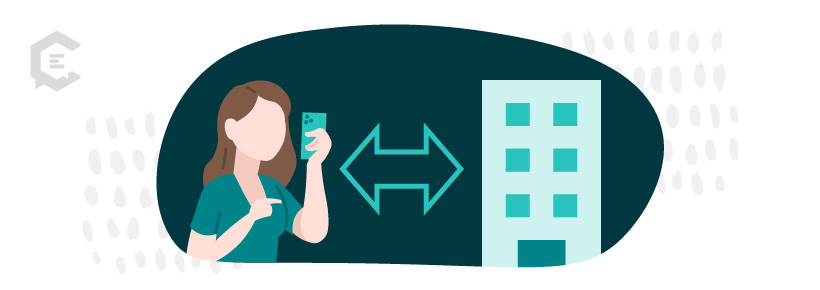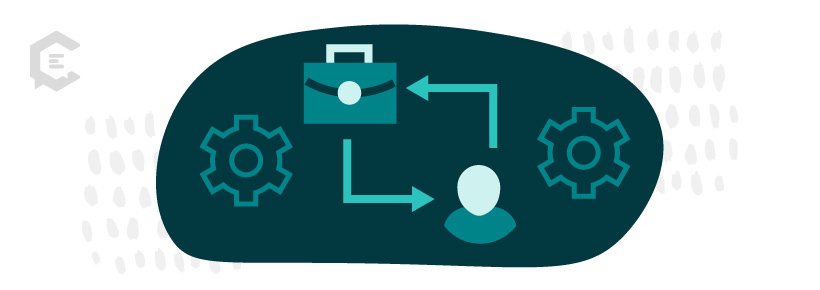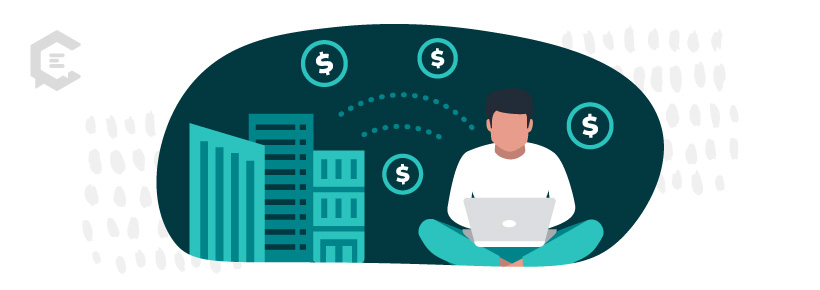What is B2C?
B2C, or “business-to-consumer,” is a broad category for all “personal use” transactions: for a customer’s enjoyment, not business use. While “consumer” describes an individual, it can also apply to a household or social group. The goal is to understand the target audience’s needs and deliver content that resonates with them to drive conversions and foster customer relationships.

B2C commerce can be in goods or services. B2C service providers, from home improvement to telecom to healthcare, tend to market directly to consumers, while B2C goods can be marketed directly or through retailers. In some cases, goods and services are closely related.
Why is Business-to-Consumer marketing so important?
B2C content marketing helps businesses build strong relationships with their customers. Businesses can establish themselves as trusted advisors by consistently delivering valuable content, addressing customer pain points, and providing helpful information.
High-level B2C marketing strategies can help your business:
- Build brand awareness
- Influence purchasing decisions
- Enhancing customer relationships
- Differentiate yourself from your competitors
- Improve SEO and organic visibility
Top business-to-consumer marketing techniques
The advancements in technology have rapidly changed the way consumers relate to businesses. Consumers have built stronger personal relationships with the brands they follow, and because of improvements in social media, they are also used to having direct access to their brands.
Several tried and true methods still advertise the service you are offering. These methods are less personal and work more like a billboard hoping to grab the attention of a passerby. These methods include:
- TV commercials
- Digital video
- Radio ads
- Direct mail
- Email offers and newsletters
With the invention of adblockers, and ad-free subscription streaming services, consumers opt out of these blanket ad experiences. Marketing strategy has shifted heavily into brand integrations that are more personal and interactive.
Influencer marketing: A company partners with a popular online figure with a built-in audience of consumers who respect their opinions. The ads are no longer billboards but present as a recommendation that might come from a close friend.
- User-Generated Content (UGC): Personalized content is one of the best ways to cut through the saturated clutter of the internet. When users create their own content, other consumers are likelier to buy in because big businesses are not selling to them. User-generated content like testimonials, videos, or online reviews builds social proof that what you are offering is legit.
- Gamification: There is something about the ability to interact and influence something that makes consumers excited about engaging with your brand. Gamification incorporates game-like elements, such as challenges, rewards, and competitions, into marketing campaigns or product experiences.
- Omnichannel Marketing: Thanks to companies like Marvel, we have witnessed the success of the franchise experience. Consumers seek to interact with your brand across multiple channels and through various experiences. Omnichannel marketing involves delivering a consistent and integrated experience across multiple channels and touchpoints, such as online, offline, mobile, social media, and physical stores.
Tone and strategy
B2C marketing usually has a personal voice and strives to deliver information in a memorable but quick way. As a rule, the lower the price point, the simpler the message… and the more potential buyers the company is looking to reach. When it comes to a $10 product, consumers usually aren’t evaluating potential purchases as carefully as business buyers are because a consumer usually isn’t bulk-buying. However, this becomes inversely true the more expensive the product is.
Example: Auto
A consumer looking to buy a car will evaluate the options carefully and probably shop around. For an individual, a vehicle is a big purchase they only make every few years. Meanwhile, a local contractor with 10 trucks might lease three more at once if they get a big job and need to ramp up their capabilities.
The evolution of consumer goods marketing
In some ways, cutting out the middle person and marketing directly to consumers is easier today than ever, thanks to social media and e-commerce marketplaces like Etsy. But there are always new challenges, particularly the downfall of local brick-and-mortar stores.
Therefore, these days, most B2C companies sell goods directly to consumers online and through marketplaces while also trying to find retail channels that make sense.
Example: Personal care product
Many personal care brands start with entrepreneurs who began by experimenting and creating products at home, selling them to their immediate circles of acquaintances. As the ability to make more products increases, they may begin to sell the product in local retailers.
In parallel, they would set up an online store and sell through Etsy or Amazon. They could market inexpensively through Facebook and Instagram while working hand-in-hand with retail stockists to strategically market their products to target buyers. All of this is B2C. Their first B2B transaction might be, for example, a local hotel buying the products to use as in-room toiletries. While the end-users are hotel customers, the buyer is the hotel: a business.
As this example shows, consumers and business customers can be closely related, and the marketing that suits one can be subtly modified for the other. Understanding a brand’s ideal customers and needs is important before launching a marketing campaign. The packaging and brand voice that successfully sells skincare products will not work to sell trucks.
Discover how consistently delivering valuable content can drive customer engagement, foster brand loyalty, and make a positive impact. Get started by booking a strategy session with ClearVoice today!






